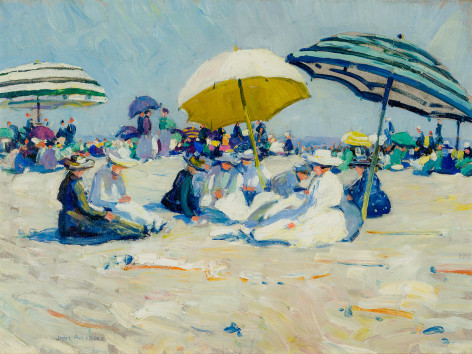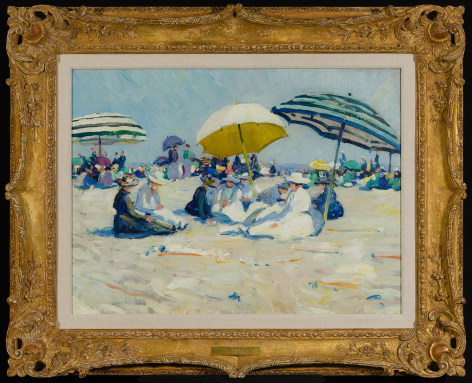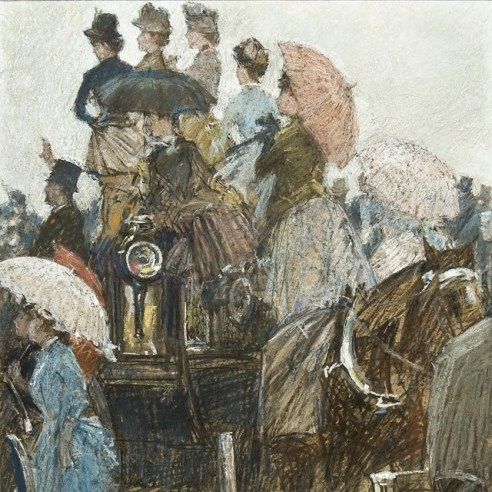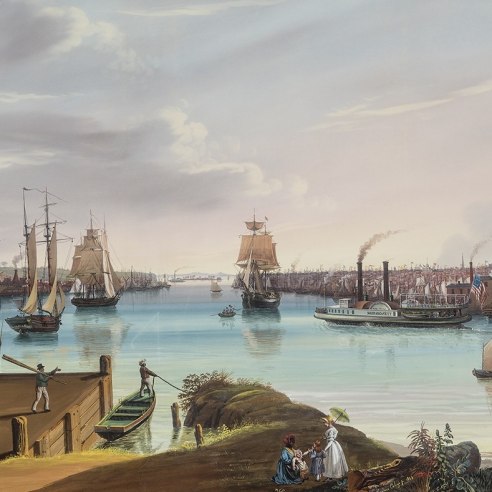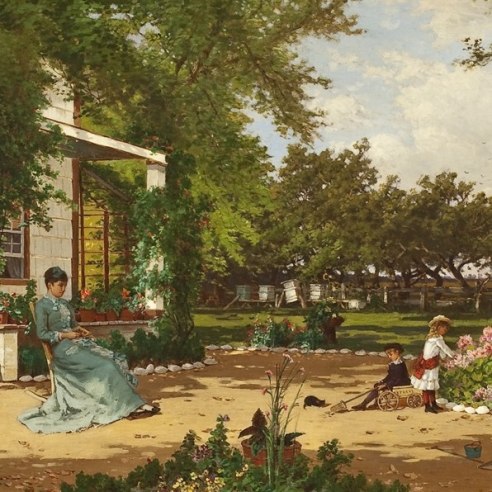
JANE PETERSON (1876–1965)
Beach Scene, Gloucester, about 1916
Oil on canvas, 18 x 24 in.
Signed (at lower left): JANE PETERSON
RECORDED: J. Jonathan Joseph, Jane Peterson: An American Artist (Boston: privately published, 1981), pp. 50, 51 illus. in color
EX COLL.: J. Jonathan Joseph, Boston, Massachusetts, and Los Angeles, California; to [Hirschl & Adler Galleries, New York, 1995]; to Betty Brown Casey, Potomac, Maryland, until 2022; to her estate, 2022 until the present
Gloucester is a fishing town on Cape Ann, some forty miles north of Boston. Settled in the earliest days of the Massachusetts Bay colony, the town boasts its own native son artist, Fitz Henry Lane (1804–1865). Beach Scene, Gloucester belongs to a genre beloved by impressionist painters—depictions of people enjoying leisure activity away from the stresses of everyday life. Between 1914 and 1924, Peterson found inspiration in New England locales, destinations that became compellingly attractive in the years of World War I, when Peterson’s accustomed fishing villages of Holland, Belgium, England, and Brittany were inaccessible. These offered a patriotic equivalent, made all the more attractive by easy transportation from New York and Boston. Although there is, at present, no precise chronology of Peterson’s travels, she exhibited New England views as early as 1915 and regularly thereafter. In selecting these destinations, Peterson followed a well-trod path, following past and present American artists including Winslow Homer, William Morris Hunt, Childe Hassam, Willard Metcalf, Edward Potthast, John Twachtman, Edward Hopper, John Sloan, Stuart Davis, and Maurice Prendergast.
In Beach Scene, Gloucester (a descriptive title), Peterson paints groups of convivial beachgoers enjoying a sunny day on a sandy strand. The work is carefully composed with a horizontal band of sand in the foreground, a median band of figures and at top, sky, punctuated by three large beach umbrellas offering token protection from the sun. The work can be approximately dated by gauging the outfits of the crowd. They are appropriate to the early years of Peterson’s visits to Gloucester, when beachgoers still preserved the covered-up modesty of the late 19th century, just before the abbreviated outfits of only a few years later in the early 1920s.

